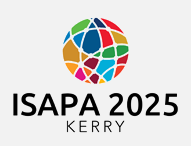Start Date
18-6-2025 9:00 AM
End Date
18-6-2025 10:30 AM
Abstract
Brazil has legislation that mandates the training of undergraduate physical education students to work with people with disabilities within its professional education system. The objective of this study was to evaluate the preparation of students for working with adapted sports.
Method: The sample of this study represents the results from courses in Federal Universities (119 programs across 49 universities). The data presented are part of a multicenter research project aimed at evaluating all 2,239 physical education programs in Brazil. A documentary analysis was conducted based on the Pedagogical Curricular Plans of each program and the teaching plans of curricular units from the institutions. Data extraction was performed using artificial intelligence (Gemini 1.5). Two experts reviewed the dataset, and only courses directly related to adapted sports were selected.
Results: A total of 28 courses (from 25 institutions) were identified as directly related to Adapted Sports. However, 10 courses were excluded because they addressed the topic using a content infusion model (53.7 ± 15.3 hours). The curriculum directly covered the Paralympic Movement in 9 courses and the Special Olympics in 1 course. Additionally, four courses discussed classification, and eight courses addressed inclusion. All references used in the courses were in Portuguese, authored by Brazilian or Portuguese researchers or translations of American authors.
Conclusion: There is a need for greater dissemination of adapted sports content within physical education curricula, as well as an expansion of topics beyond the Paralympic context
Recommended Citation
Winckler, ciro; Souza, Pablo B. Mr; Costa e Silva, Anselmo Prof; Tanhoffer, Ricardo; and Furtado, Otávio, "Adapted Sports in Brazilian Universities: Are We Truly Preparing Future Professionals?" (2025). International Symposium of Adapted Physical Activity and International Symposium on Physical Activity and Visual Impairment and Deafblindness. 16.
https://sword.mtu.ie/isapa/2025/day3/16
Adapted Sports in Brazilian Universities: Are We Truly Preparing Future Professionals?
Brazil has legislation that mandates the training of undergraduate physical education students to work with people with disabilities within its professional education system. The objective of this study was to evaluate the preparation of students for working with adapted sports.
Method: The sample of this study represents the results from courses in Federal Universities (119 programs across 49 universities). The data presented are part of a multicenter research project aimed at evaluating all 2,239 physical education programs in Brazil. A documentary analysis was conducted based on the Pedagogical Curricular Plans of each program and the teaching plans of curricular units from the institutions. Data extraction was performed using artificial intelligence (Gemini 1.5). Two experts reviewed the dataset, and only courses directly related to adapted sports were selected.
Results: A total of 28 courses (from 25 institutions) were identified as directly related to Adapted Sports. However, 10 courses were excluded because they addressed the topic using a content infusion model (53.7 ± 15.3 hours). The curriculum directly covered the Paralympic Movement in 9 courses and the Special Olympics in 1 course. Additionally, four courses discussed classification, and eight courses addressed inclusion. All references used in the courses were in Portuguese, authored by Brazilian or Portuguese researchers or translations of American authors.
Conclusion: There is a need for greater dissemination of adapted sports content within physical education curricula, as well as an expansion of topics beyond the Paralympic context

